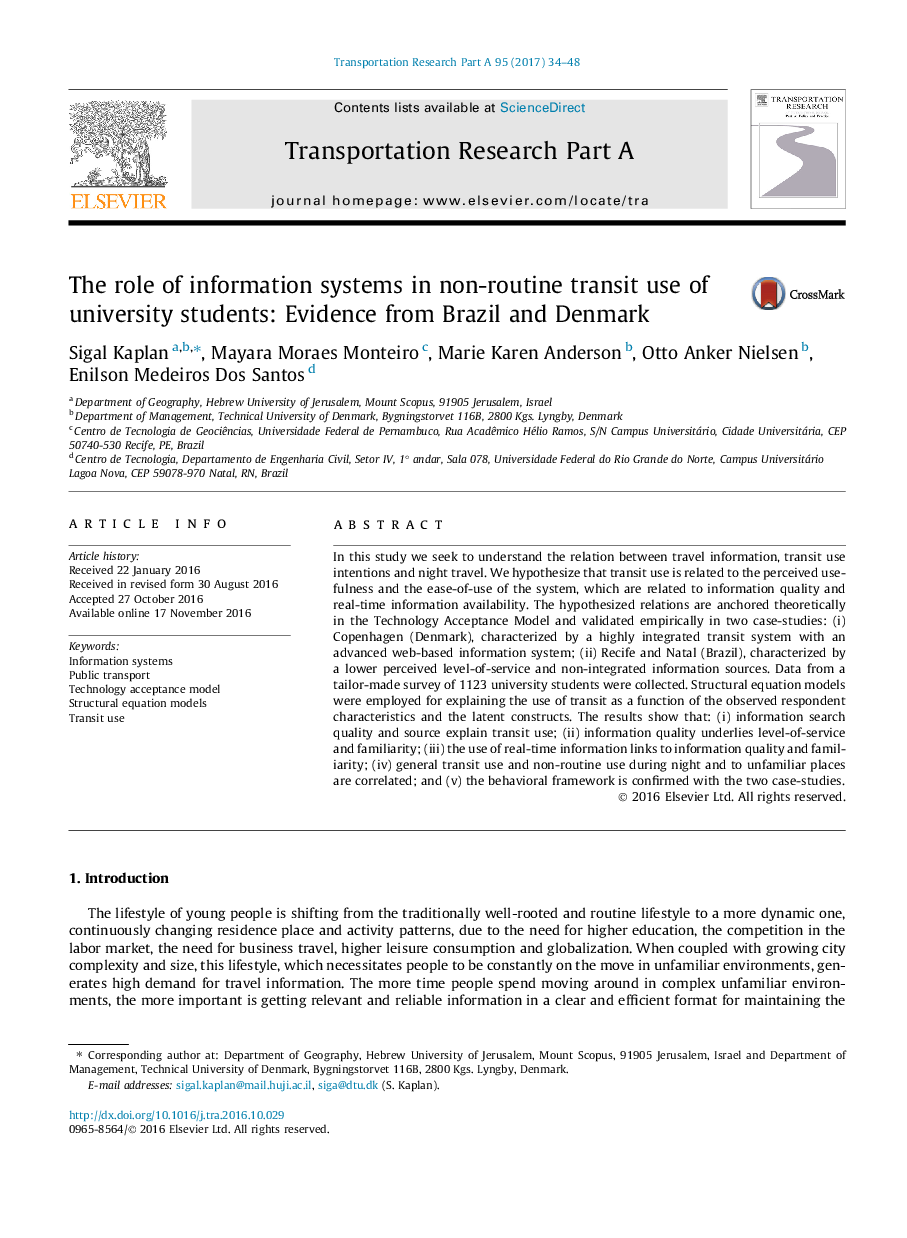| Article ID | Journal | Published Year | Pages | File Type |
|---|---|---|---|---|
| 4929068 | Transportation Research Part A: Policy and Practice | 2017 | 15 Pages |
In this study we seek to understand the relation between travel information, transit use intentions and night travel. We hypothesize that transit use is related to the perceived usefulness and the ease-of-use of the system, which are related to information quality and real-time information availability. The hypothesized relations are anchored theoretically in the Technology Acceptance Model and validated empirically in two case-studies: (i) Copenhagen (Denmark), characterized by a highly integrated transit system with an advanced web-based information system; (ii) Recife and Natal (Brazil), characterized by a lower perceived level-of-service and non-integrated information sources. Data from a tailor-made survey of 1123 university students were collected. Structural equation models were employed for explaining the use of transit as a function of the observed respondent characteristics and the latent constructs. The results show that: (i) information search quality and source explain transit use; (ii) information quality underlies level-of-service and familiarity; (iii) the use of real-time information links to information quality and familiarity; (iv) general transit use and non-routine use during night and to unfamiliar places are correlated; and (v) the behavioral framework is confirmed with the two case-studies.
